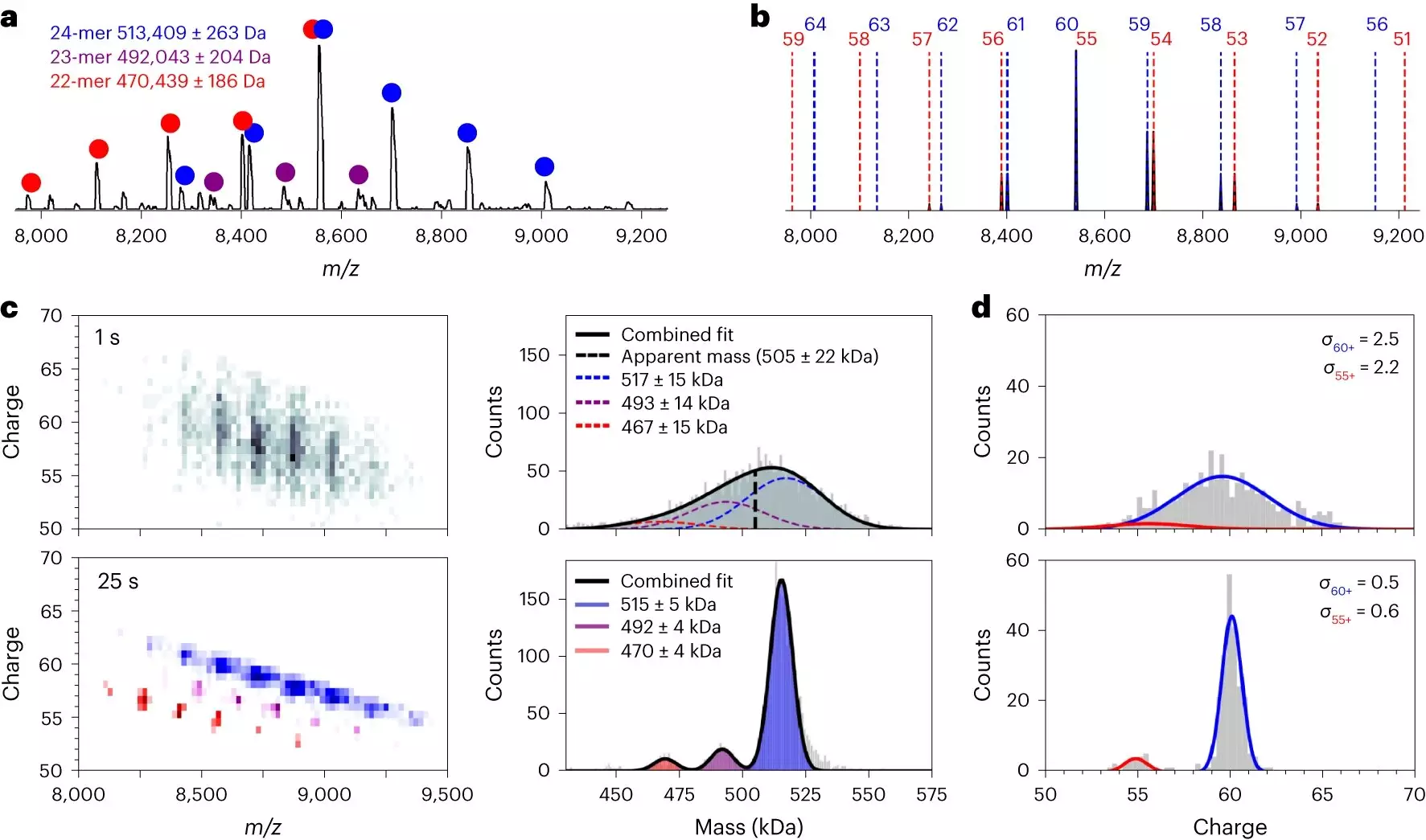A recent study led by Prof. Albert Heck and his team of chemists has introduced a groundbreaking approach to examining and understanding molecules. Their innovative method involves enhancing current measuring equipment to trap and observe individual molecules for an extended period of up to 25 seconds. This significant improvement has allowed the researchers to delve into the finer details of molecules, greatly enhancing their comprehension and analysis capabilities.
The precision upgrade achieved by Prof. Heck and his team is truly remarkable. It has been likened to being able to detect a mass difference of one in a million, a level of accuracy that was previously unattainable. To put it into perspective, Prof. Heck compares this precision to being able to identify a single missing sugar grain from a full bag of one kilogram of sugar. This level of detail opens up a world of possibilities for further research and practical applications in various scientific fields.
Traditionally, chemists have relied on mass spectrometry to analyze the composition of molecules. While this technology offers detailed insights into molecular structures, its limitation lies in the fact that it examines millions of molecules simultaneously. This makes it challenging to study large molecules due to the interference caused by the sheer number of molecules being analyzed concurrently.
In response to this challenge, Prof. Heck’s team devised a novel method utilizing Orbitrap mass spectrometry, where a single molecule is trapped in an Orbitrap while undergoing rapid spinning. By measuring the spinning behavior of the molecule, the researchers can accurately determine its mass and composition. This innovative approach allows for the precise analysis of individual molecules, a significant departure from the conventional mass spectrometry techniques.
One of the most remarkable aspects of Prof. Heck’s study is the ability to prolong the observation time of individual molecules up to 25 seconds. This extended duration of analysis enables scientists to capture a wealth of detailed information about the spinning frequency and characteristics of the molecules under study. The analogy of swinging on a swing is apt here – just as a longer swinging duration allows for a more precise assessment of rhythm and characteristics, trapping spinning ions for an extended period enables scientists to extract intricate details about molecular behavior.
The implications of this groundbreaking advancement in molecule analysis are far-reaching, particularly in the field of medical research. The ability to measure giant molecules with such precision opens up new possibilities for developing therapeutic molecules, such as viruses used in gene therapy. These viruses are essential for delivering correctly functioning genes to patients with genetic disorders, replacing faulty genes in their DNA.
Prof. Heck highlights a critical issue in current gene therapy practices – the inability to accurately verify whether a virus carries the specific gene it is intended to deliver. This lack of precision results in a significant portion of gene therapy viruses being ineffective, as only a small percentage are successfully loaded with the desired gene. By enhancing the measurement accuracy between ’empty’ and ‘filled’ viruses, developers of gene therapy could streamline their production processes and significantly improve treatment outcomes for patients.
The innovative approach developed by Prof. Albert Heck and his team represents a significant leap forward in the field of molecule analysis. The precision, extended observation time, and detailed insights provided by this method have the potential to revolutionize scientific research and contribute to advancements in various industries, particularly in the development of therapeutic molecules for medical purposes. It is through such groundbreaking advancements that the boundaries of scientific knowledge are continually pushed, opening up new possibilities for innovation and progress.


Leave a Reply